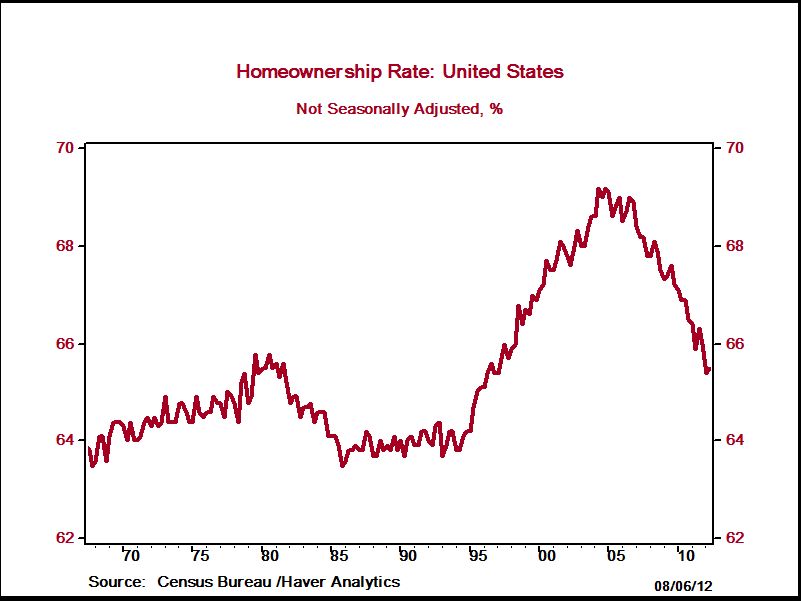(NAR) -- The U.S. home ownership rate stands at a 15-year low with the latest figures showing 65.6 percent of Americans living in owner-occupied homes. At peak in 2004 the ownership rate was a hair shy of 70 percent. Over the next two years it may fall further, possibly to 64 percent before stabilizing. But the falling homeownership rate will not mean fewer home sales. The dynamics is such that both the rental and ownership households will rise, though the proportion will be such that the home ownership rate will fall.
Though ownership and rental demand at first appear to be a trade-off in most years, the net number of homeowners and renters also rises simultaneously in most years. It is a natural outgrowth of about 3 million additional people living in the country each year, which generally leads to about 1.1 to 1.3 million net new household formations each year. From the 1960s on, the number of home-owning households rose on average by about one million each year while the number of rental households rose by 300,000 to 400,000. In some years, there are distinct tradeoffs between owning and renting with one rising while the other falls. The starkest example of this are the years since the housing bubble crashed. The number of homeowners fell from 2005 to today while the number of renters rose quite significantly. The key reason for this prolonged multiyear trade-off development arose because of a sharp slowdown in household formation. Household formation in the past 5 years has been only the half the normal rate. It is understandable, given the difficult economic conditions of the past several years, for many young adults to move into their parents’ home or find extra roommates to share the living costs. But a return to normal household formation will finally mean a rise in the net new numbers of homeowners and renters, as has been historically the case. In a more optimistic scenario, if the household formation burst out in order to compensate for the prolonged suppression, to say something like 1.5 million annually over the next few years, then the increase in net new homeowners and net new renters could both be higher than their historic average gains.




